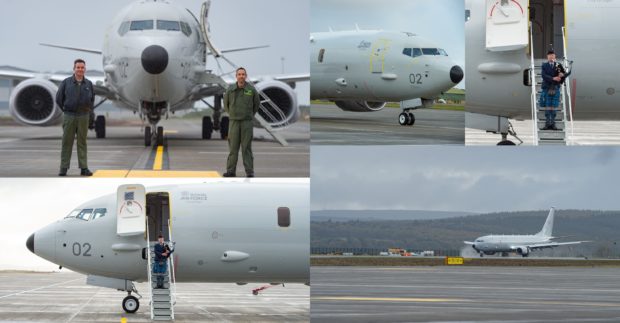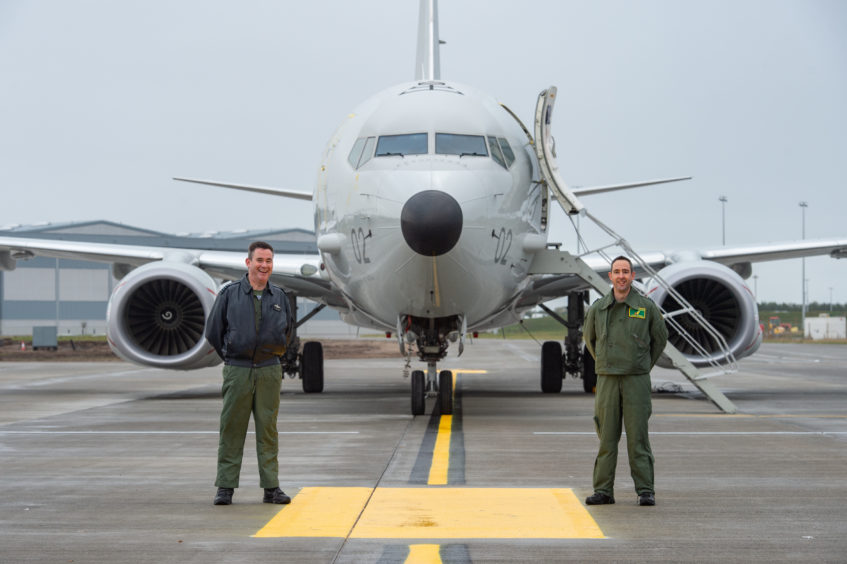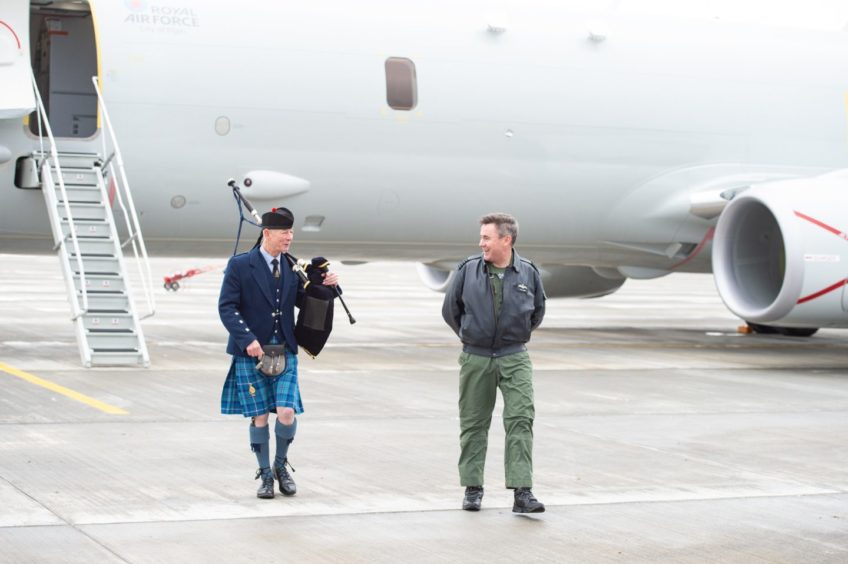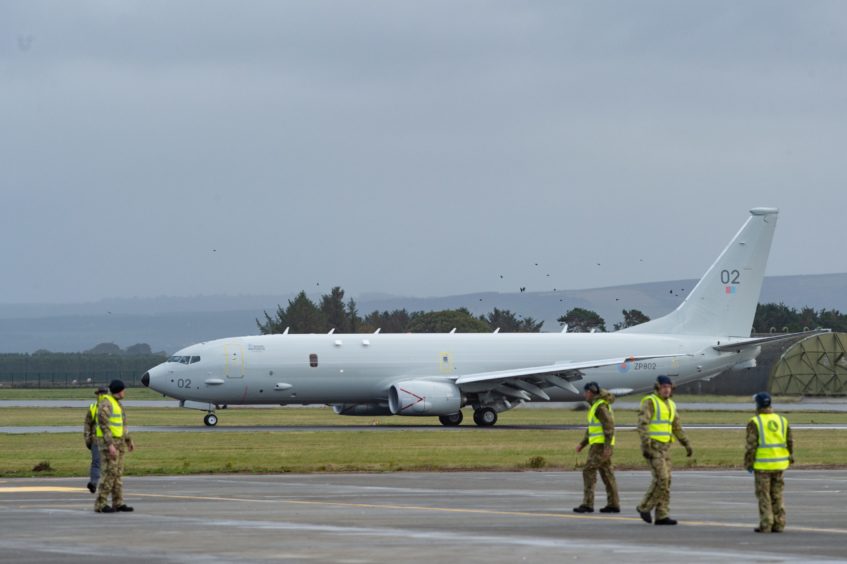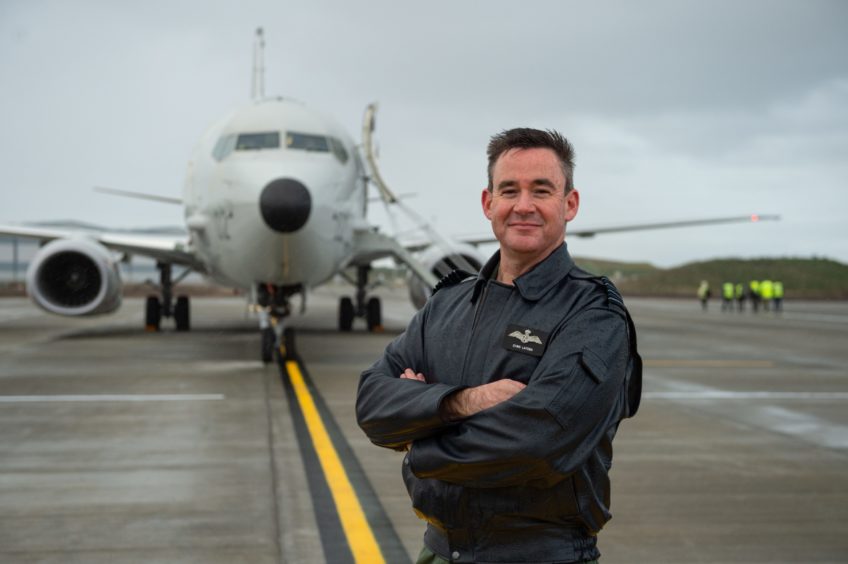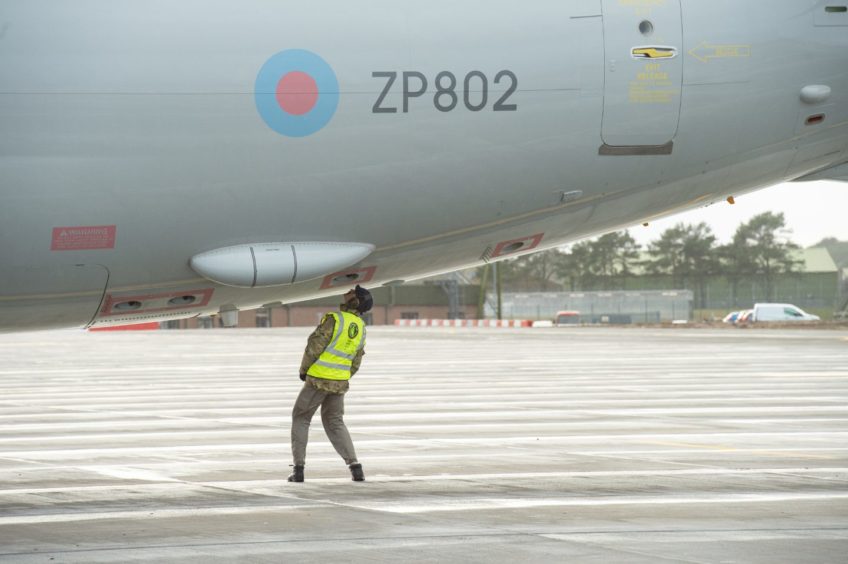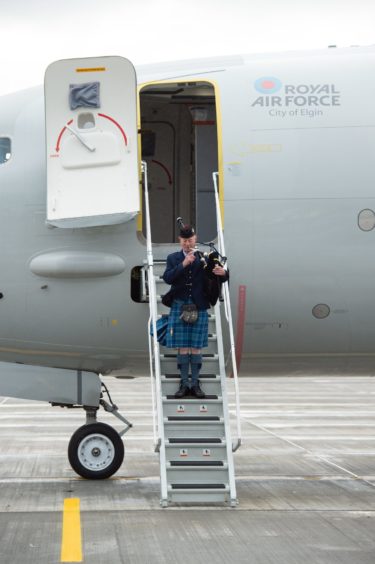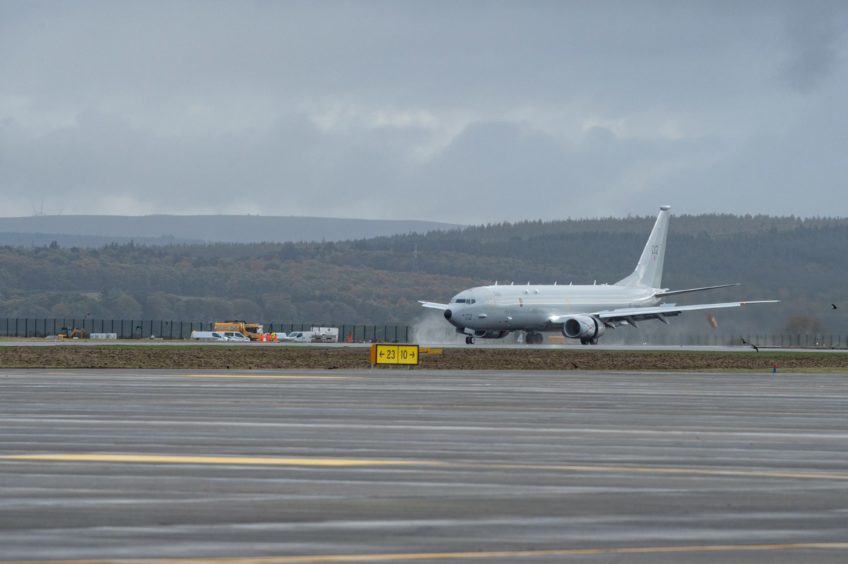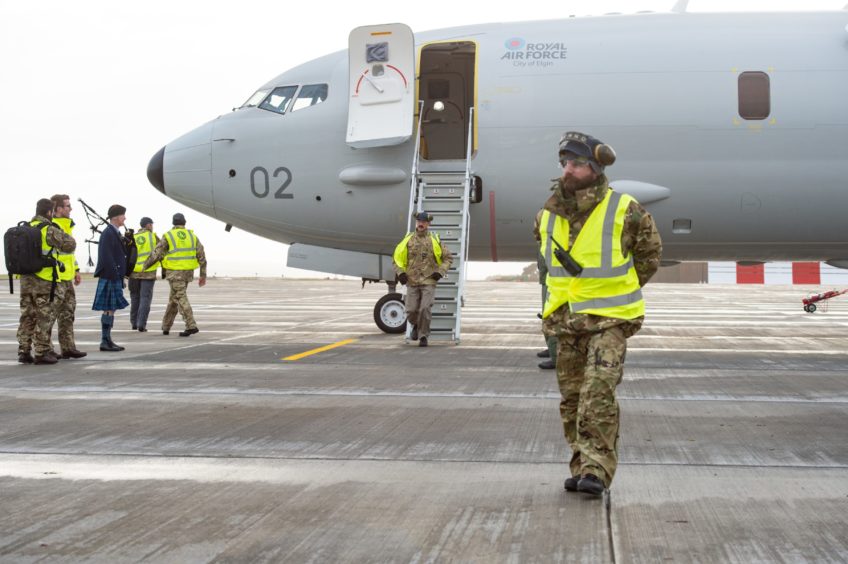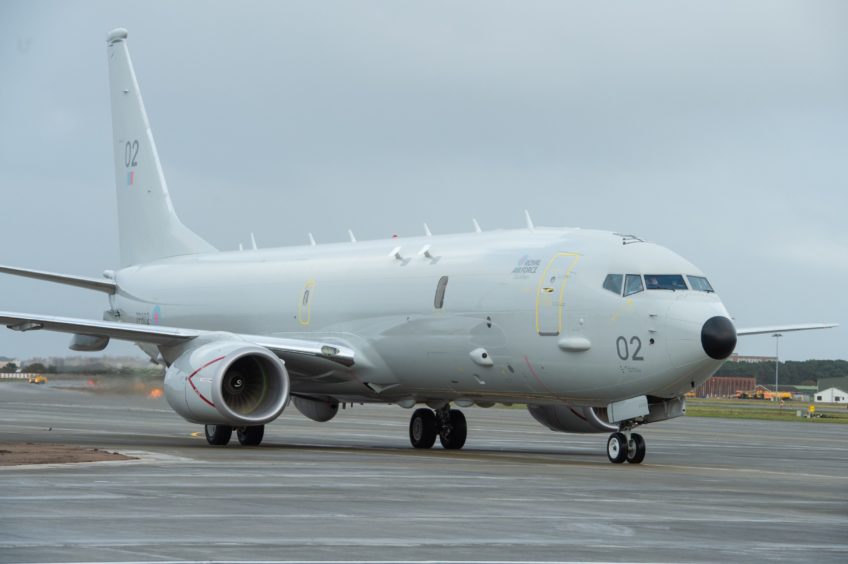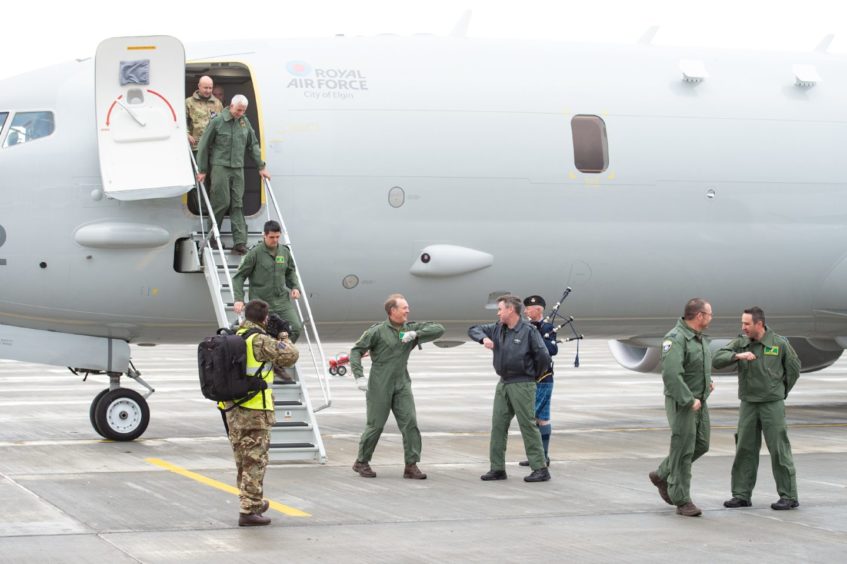RAF Lossiemouth marked the beginning of a new era as the first of a £3 billion fleet of spy planes touched down at the base.
The P-8A Poseidon named City of Elgin landed at the Moray airfield following a £75m revamp of the runways to ensure they could cope with the heavier aircraft.
The aircraft has been flying from a temporary home at nearby Kinloss Barracks, formerly RAF Kinloss, since it arrived in the country in February.
Wing Commander James Hanson, of the 120 Squadron, spoke of his pride as the plane arrived at its new home yesterday afternoon.
Wg Cdr Hanson said: “I’m humbled by everything, a lot of people have put in the hard graft to get all the work done.
“This is really tremendous for RAF Lossiemouth and the Moray region.
“We are ready to deal with any threats and it is certainly true that the international environment is increasingly competitive, commercially and militarily.
“We are here to ensure Britain’s interests are represented and our trade and people are free to move.
“We secure the sky with Typhoons and now secure the seas with Poseidon – which is crucial to protect our country from threats.
“A big thank to Kinloss for being such great hosts, however it is amazing to be at our new home and ready for operations.”
The nine Poseidon aircraft will be tasked with monitoring hidden dangers beneath the waves through radar and anti-submarine torpedoes, and have the capability to launch search and rescue operations.
Hundreds of additional military personnel will arrive in Moray to fly and operate the craft, with 470 new posts expected by 2024.
A new £132 million facility designed for the new aircraft will be able to house three planes for maintenance while the remainder of the fleet can be parked outside.
Station Commander of RAF Lossiemouth, Group Captain Chris Layden, said it was a proud moment for the base which had been threatened with the axe less than a decade ago.
Mr Layden said: “It is tremendous for RAF Lossiemouth and the people of Moray who have supported us over the years.
“It is fantastic when you look back 10 years, when the people of Moray were marching to keep the airbase open and things could not be more different.
“I’m hugely honoured and want to pay tribute to the thousands of people who made this happen.
“This takes us into the next generation and puts RAF Lossiemouth, for the first time, into the martine patrol game of protecting our seas as well as securing our skies.”
He added: “It is ushering in a new era for the station delivering combat air power and maritime patrol operations over and around the United Kingdom.
“On Monday I had the privilege of landing the first Typhoon on our newly resurfaced runways, and now I have had the pleasure of welcoming in the first Poseidon to its permanent home in Moray.
“This is just the beginning of our expansion and modernisation as one of the RAF’s most strategically important stations in the United Kingdom.”
Meanwhile the Typhoon fighter jets attached to the Moray station will return to the base later this week having been temporarily relocated to RAF Leuchars in Fife since July while work was carried out on the runways.
The £75m programme to resurface Lossiemouth’s runways and operating surfaces began in January 2020, with the work being carried out by VolkerFitzpatrick.
The work has involved stripping, strengthening, and resurfacing all of the runways, taxiways and dispersals.
Poseidon submarine hunters have a communications suite which enables the intelligence it gathers to be passed to commanders whether they are in the air, on a ship, on the ground, or back at RAF Lossiemouth.
54 Squadron has been training new pilots and weapons systems operators on the platform.
Since February, crews have been securing the seas on operational missions.
Arrival of first Poseidon completes remarkable turnaround for RAF Lossiemouth
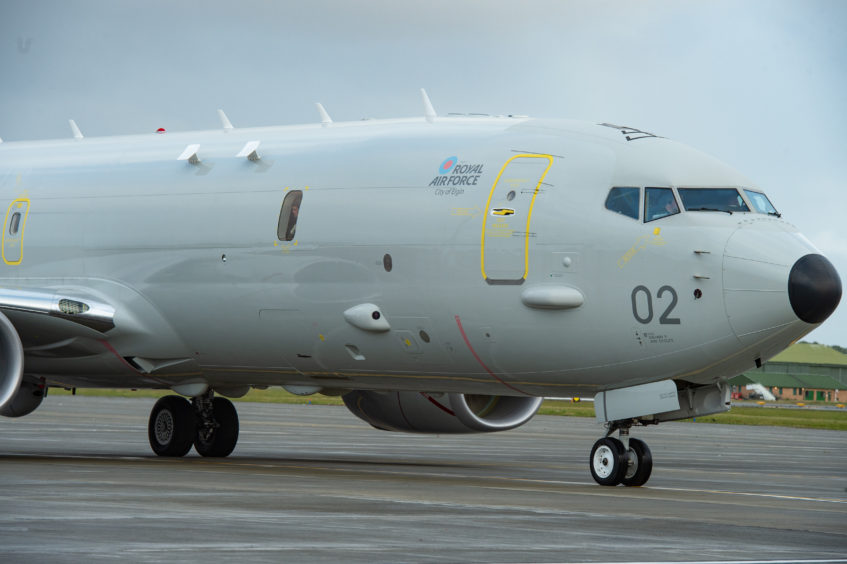
The arrival of the first P-8A Poseidon at RAF Lossiemouth completed a remarkable turnaround for the base that was threatened with closure less than a decade.
The Moray station was saved at the expense of nearby RAF Kinloss during a wave of defence cuts in 2011 following a massive public campaign.
A watchful eye over the seas was previously maintained from the latter base by the Nimrod fleet, which was scrapped at the time.
However, many of the Kinloss personnel continued to hone their maritime patrol skills with allied air forces across the globe.
And the decision in spring 2016 to resume sea patrols from Moray with the nine-strong Poseidon fleet, which will cost a collective £3 billion, will lead to many of the same specialists returning to the region.
A massive £400m upgrade was commissioned to get RAF Lossiemouth ready for the two new Poseidon squadrons, including a massive hangar and headquarters to run operations from.
The first Poseidon, Pride of Moray, arrived at a temporary base at the former RAF Kinloss, which is now operated by the Army, in February.
Patrols have already begun while RAF Lossiemouth’s runways have been strengthened for the larger planes ahead of the arrival of City of Elgin at its permanent home.
